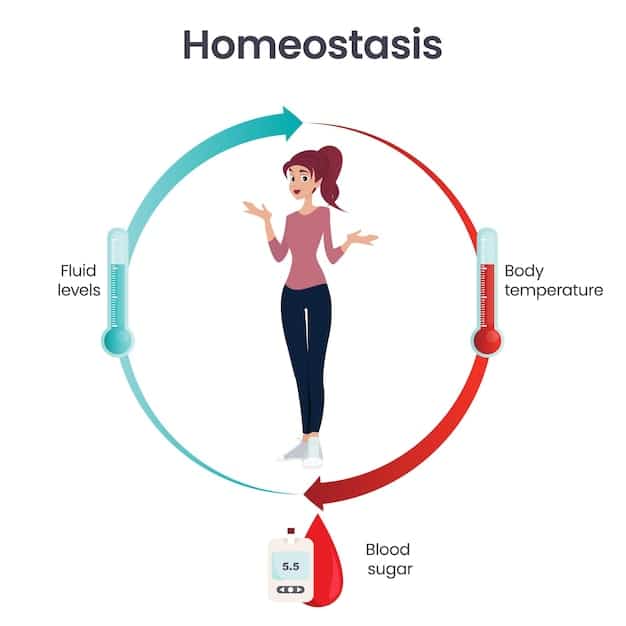Intermittent Fasting 2025: Is 16/8 Still the Best for Weight Loss?

Intermittent fasting, especially the 16/8 method, remains a popular approach to weight loss in 2025, although its continued effectiveness depends on individual factors, lifestyle, and adherence to a balanced diet and regular exercise.
Is the 16/8 method of Intermittent Fasting in 2025: Is the 16/8 Method Still the Most Effective for Weight Loss? still the gold standard for shedding pounds? Let’s explore this popular eating pattern in the context of evolving health trends and scientific advancements.
Understanding Intermittent Fasting and the 16/8 Method
Intermittent fasting (IF) involves cycling between periods of eating and voluntary fasting on a regular schedule. The 16/8 method, also known as the Leangains protocol, is a specific IF approach where you fast for 16 hours and eat all your meals within an 8-hour window each day.
How the 16/8 Method Works
The 16/8 method is popular because it’s relatively easy to integrate into daily life. Most people choose an 8-hour eating window that aligns with their lifestyle, such as 12 p.m. to 8 p.m. During the 16-hour fasting period, you typically consume only water, black coffee, or other calorie-free beverages.
Potential Benefits of the 16/8 Method
Beyond weight loss, the 16/8 method might offer other health benefits. Some studies suggest improvements in insulin sensitivity, blood sugar control, and even brain health.
- Improved metabolic health markers
- Simplified approach to calorie restriction
- Potential increase in growth hormone production
- May promote cellular repair processes
In summary, the 16/8 method of intermittent fasting involves a daily 16-hour fasting window and an 8-hour eating window, offering potential benefits like weight loss and improved metabolic health.
The Science Behind Intermittent Fasting for Weight Loss
The core principle behind intermittent fasting’s effectiveness for weight loss lies in its ability to shift your body’s energy source. During the fasting period, your body depletes its glycogen stores (stored glucose) and starts burning fat for fuel.
Fat Burning and Ketosis
When you fast, your insulin levels decrease, signaling your body to start breaking down fat for energy. This process can lead to ketosis, a metabolic state where your body primarily uses ketones (produced from fat breakdown) for fuel.
Calorie Restriction and Energy Balance
Intermittent fasting often leads to a natural reduction in calorie intake. With a limited eating window, people tend to consume fewer calories overall, contributing to a calorie deficit necessary for weight loss.

This section explained how intermittent fasting aids weight loss by promoting fat burning, inducing ketosis, and naturally restricting calorie intake, all leading to a negative energy balance.
Comparing the 16/8 Method to Other Intermittent Fasting Approaches
While the 16/8 method is popular, it’s just one of several intermittent fasting approaches. Other methods include the 5:2 diet, alternate-day fasting, and eat-stop-eat.
5:2 Diet
The 5:2 diet involves eating normally for five days of the week and restricting calorie intake to around 500-600 calories on the other two non-consecutive days.
Alternate-Day Fasting
Alternate-day fasting involves alternating between days of normal eating and days of severe calorie restriction (around 500 calories) or complete fasting.
Eat-Stop-Eat
Eat-Stop-Eat consists of one or two 24-hour fasts per week on non-consecutive days. On fasting days, you consume zero calories, while eating normally on the other days.
- 5:2 diet may be more suitable for those who prefer structured calorie restriction over daily fasting.
- Alternate-day fasting can be intense and may not be sustainable for everyone.
- Eat-Stop-Eat provides flexibility but may require more planning to manage fasting days.
In summary, while the 16/8 method is a popular IF approach, other options like the 5:2 diet, alternate-day fasting, and Eat-Stop-Eat offer different schedules that may suit individual preferences and lifestyles better.
Factors Influencing the Effectiveness of the 16/8 Method in 2025
The effectiveness of the 16/8 method for weight loss in 2025 will depend on several key factors. These include individual adherence, dietary choices during the eating window, and overall lifestyle.
Dietary Choices During the Eating Window
Even with intermittent fasting, the quality of your diet matters. Consuming processed foods, sugary drinks, and excessive amounts of unhealthy fats can hinder weight loss progress.
Individual Adherence and Consistency
Consistency is crucial for success with any diet, including intermittent fasting. Skipping fasting periods or frequently extending the eating window can reduce the method’s effectiveness.
Lifestyle and Physical Activity
A sedentary lifestyle can counteract the benefits of intermittent fasting. Regular physical activity is essential for burning calories, building muscle, and improving overall health.

This section emphasized that the success of the 16/8 method in 2025 depends on factors like dietary choices, consistent adherence to the fasting schedule, and incorporating physical activity into one’s lifestyle.
Potential Drawbacks and Considerations for the 16/8 Method
While intermittent fasting can be effective, it’s not without potential drawbacks. Some individuals may experience side effects like increased hunger, irritability, or difficulty concentrating.
Potential Side Effects and How to Manage Them
Common side effects of intermittent fasting include hunger pangs, headaches, and fatigue. These can often be managed by staying hydrated, consuming nutrient-dense foods during the eating window, and gradually adjusting to the fasting schedule.
Who Should Avoid Intermittent Fasting
Intermittent fasting is generally not recommended for pregnant or breastfeeding women, individuals with a history of eating disorders, or those with certain medical conditions like diabetes or hypoglycemia.
Long-Term Sustainability
The long-term sustainability of the 16/8 method is a consideration. Some people may find it difficult to maintain the fasting schedule over an extended period, leading to potential dietary relapse.
- Listen to your body and adjust the fasting schedule as needed.
- Consult with a healthcare professional before starting intermittent fasting, especially if you have underlying health conditions.
- Be mindful of potential social challenges, such as eating out or attending events during fasting periods.
In conclusion, while the 16/8 method can be beneficial, it’s important to be aware of potential side effects, contraindications, and the need for long-term sustainability, and to consult with healthcare professionals when necessary.
The Future of Intermittent Fasting: 2025 and Beyond
Looking ahead to 2025 and beyond, intermittent fasting will likely continue to evolve as research deepens and individual preferences shift. Personalized approaches and technological advancements could play significant roles.
Personalized Intermittent Fasting
Advancements in personalized nutrition may lead to tailored intermittent fasting plans based on individual genetics, metabolism, and lifestyle factors. These could optimize the method’s effectiveness and minimize potential side effects.
Technological Advancements
Wearable devices and apps can help track fasting periods, monitor calorie intake, and provide real-time feedback. This technology can enhance adherence and provide valuable insights into the method’s impact on individual health.
Integration with Other Health and Wellness Trends
Intermittent fasting may become increasingly integrated with other health and wellness trends, such as the ketogenic diet, plant-based eating, and mindfulness practices. This holistic approach could amplify the benefits and promote overall well-being.
In summary, as we approach 2025 and beyond, intermittent fasting is poised to evolve through personalization, technological integration, and incorporation with other health trends, offering more tailored and effective approaches to weight management and overall well-being.
| Key Point | Brief Description |
|---|---|
| ⏱️ 16/8 Method | Fast for 16 hours, eat within an 8-hour window daily. |
| 🔥 Fat Burning | IF promotes fat burning by depleting glycogen and lowering insulin. |
| 🥗 Diet Quality | Healthy food choices during eating window are crucial for results. |
| 📱 Tech Integration | Apps and wearables can aid adherence and track progress. |
Frequently Asked Questions About Intermittent Fasting
▼
The 16/8 method is generally safe for most healthy adults. However, it’s not recommended for pregnant or breastfeeding women, individuals with a history of eating disorders, or those with certain medical conditions.
▼
Yes, you can drink black coffee (without sugar or milk) during the fasting period. Black coffee is calorie-free and can help suppress appetite. Avoid adding any sweeteners or creamers.
▼
Results vary depending on individual factors such as starting weight, diet, and exercise habits. Some people may see noticeable weight loss within a few weeks, while others may take longer. Consistency is key.
▼
Focus on whole, nutrient-dense foods such as fruits, vegetables, lean proteins, and whole grains. Avoid processed foods, sugary drinks, and excessive amounts of unhealthy fats to maximize the benefits of intermittent fasting.
▼
Yes, regular exercise is highly recommended. You can exercise during either the fasting or eating window, depending on your preference. Some people prefer to exercise before breaking their fast.
Conclusion
In conclusion, while the 16/8 method remains a relevant and potentially effective tool for weight loss in 2025, its success hinges on individual adherence, healthy dietary choices, and integration with a balanced lifestyle that includes regular physical activity. Furthermore, future advancements in personalization and technology promise to make intermittent fasting even more tailored and effective for diverse populations.





